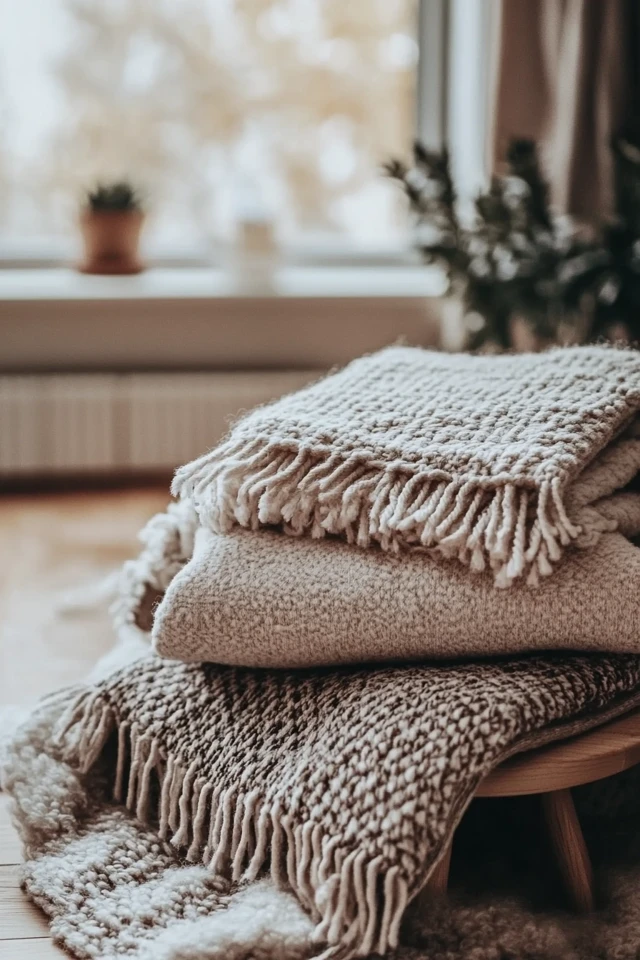Introduction
When it comes to creating a cozy vibe in your room, texture is your secret weapon. I learned this firsthand when I transformed my cold, minimalist bedroom into a warm, inviting retreat. It wasn’t about adding more furniture or switching up the color scheme—it was about layering textures. The chunky knit throw draped across my bed, the velvet pillows on my armchair, and the woven jute rug underfoot all worked together to make the space feel soft, lived-in, and comforting.
Texture has a way of engaging the senses and adding depth to a room. From plush fabrics to rough natural materials, mixing and matching textures can elevate your space, making it feel luxurious and cozy. In this guide, I’ll show you how to incorporate texture into your room to create a vibe that’s warm, inviting, and irresistibly snug.
Why Texture Matters in Interior Design
Key Benefits
- Adds Depth: Textures create visual interest and prevent a space from feeling flat or lifeless.
- Enhances Comfort: Soft, touchable materials invite relaxation and warmth.
- Boosts Style: Layered textures add sophistication and personality to your room.
- Balances Space: Mixing textures helps balance hard and soft elements for a cohesive look.
1. Start With a Layered Bed
Why It Works
The bed is often the focal point of a room, and adding texture here sets the tone for a cozy vibe.
How to Do It
- Use layered bedding, starting with smooth cotton or linen sheets.
- Add a plush duvet or comforter for softness and warmth.
- Drape a chunky knit or faux fur throw at the foot of the bed.
- Mix textures with velvet, corduroy, or patterned throw pillows in complementary tones.
2. Incorporate Rugs
Why It Works
Rugs anchor the room and provide warmth and texture underfoot.
How to Do It
- Choose a shag or faux sheepskin rug for maximum coziness.
- Use a woven jute or sisal rug for natural, tactile charm.
- Layer rugs by placing a smaller, textured rug over a larger, neutral one.
- Opt for rugs with interesting patterns or raised designs to add dimension.
3. Add Soft Furnishings
Why It Works
Pillows, cushions, and blankets are easy ways to experiment with textures while adding comfort.
How to Do It
- Pile on throw pillows in a mix of materials like velvet, knit, or faux leather.
- Use quilts or woven blankets as both decor and functional warmth.
- Add a floor cushion or pouf with textured fabric for extra seating.
- Incorporate seasonal textiles—chunky knits in winter and breezy cottons in summer.
4. Play With Wall Textures
Why It Works
Textured walls add an unexpected layer of coziness and style to your room.
How to Do It
- Use shiplap, beadboard, or wainscoting for a rustic or farmhouse look.
- Try a textured wallpaper with patterns like grasscloth or embossed designs.
- Hang a macramé wall hanging or woven tapestry for a boho touch.
- Add wood paneling or reclaimed wood accents for a natural, warm feel.
5. Mix and Match Natural Materials
Why It Works
Natural textures like wood, stone, and rattan bring a sense of warmth and authenticity to your room.
How to Do It
- Incorporate wooden furniture with a distressed or raw finish.
- Use woven baskets for storage or as decorative elements.
- Add a stone or ceramic lamp base for an earthy, textural accent.
- Layer with bamboo shades or rattan furniture for a breezy, organic touch.
6. Include Textured Lighting
Why It Works
Lighting isn’t just functional—it can also introduce texture through its materials and design.
How to Do It
- Choose woven or fabric lamp shades for a softer look.
- Use metal or ceramic lamps with textured finishes for added interest.
- Incorporate string lights or paper lanterns to create a cozy glow.
- Add a rattan pendant light for a boho-inspired vibe.
7. Layer Window Treatments
Why It Works
Layering curtains or shades adds softness and depth to your walls while controlling light.
How to Do It
- Start with sheer curtains for a light, airy base.
- Add heavier curtains in velvet, linen, or textured cotton for warmth and privacy.
- Use roman shades with a woven or fabric finish for a polished look.
- Mix patterns and solids to keep the design balanced and interesting.
8. Add Small Decorative Touches
Why It Works
Decor items like vases, trays, and art can introduce texture in subtle but impactful ways.
How to Do It
- Use ceramic or stone vases with matte finishes for a sophisticated touch.
- Incorporate woven trays or bowls on tables or shelves.
- Add a stack of books with textured covers for a styled look.
- Display art pieces that feature mixed media, like canvas, wood, or metal.
9. Bring in Greenery
Why It Works
Plants not only add color but also a natural texture that complements any style.
How to Do It
- Use plants with interesting leaves, like fiddle leaf figs or monstera.
- Place greenery in textured pots made of terracotta, concrete, or wicker.
- Incorporate hanging plants with macramé plant hangers for added layers.
- Group plants in varying heights and sizes for visual interest.
10. Balance Textures for Cohesion
Why It Works
Mixing too many textures can feel chaotic—balancing them creates a harmonious look.
How to Do It
- Pair soft textures like velvet and faux fur with harder elements like wood or metal.
- Stick to a cohesive color palette to tie different textures together.
- Use textured items sparingly to avoid overwhelming the space.
- Keep the focus on a few key areas, like the bed, sofa, or walls.
Picture Gallery
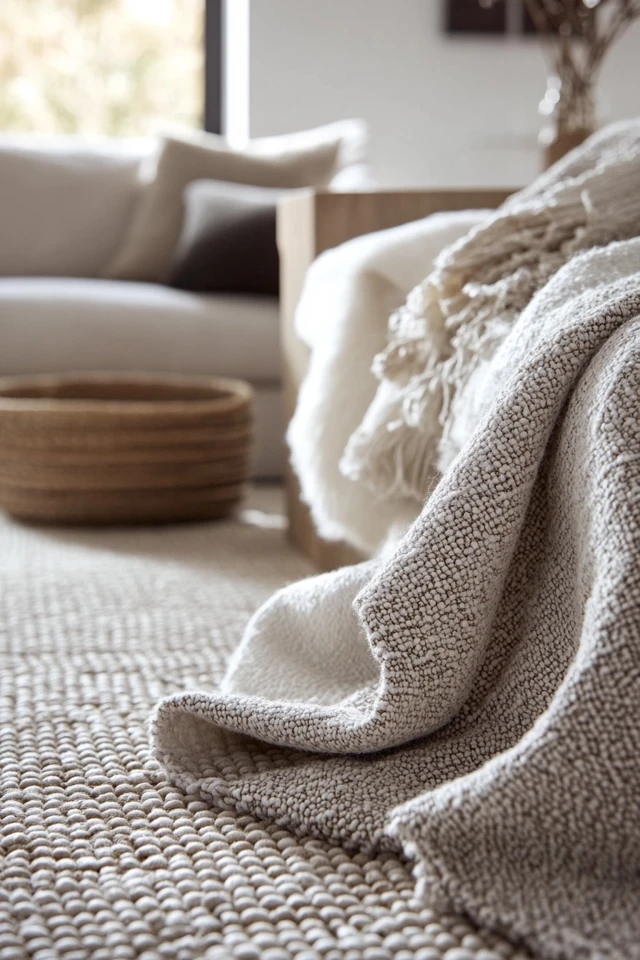
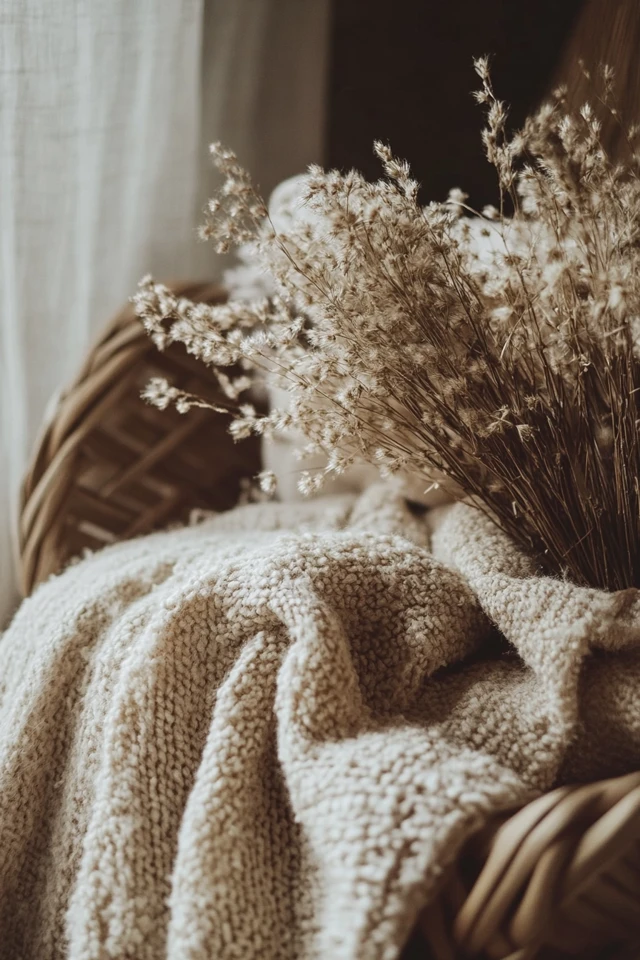
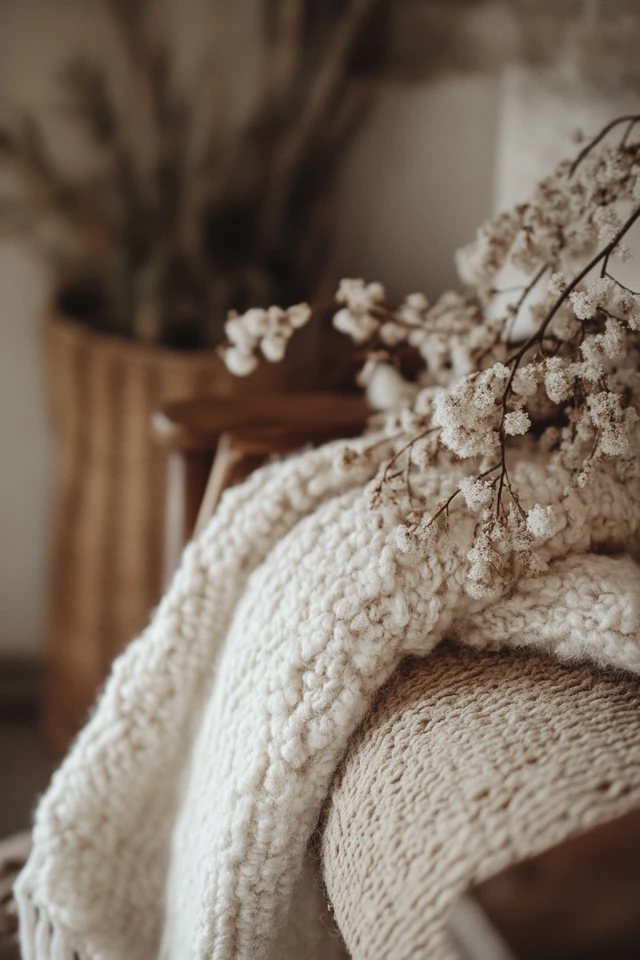
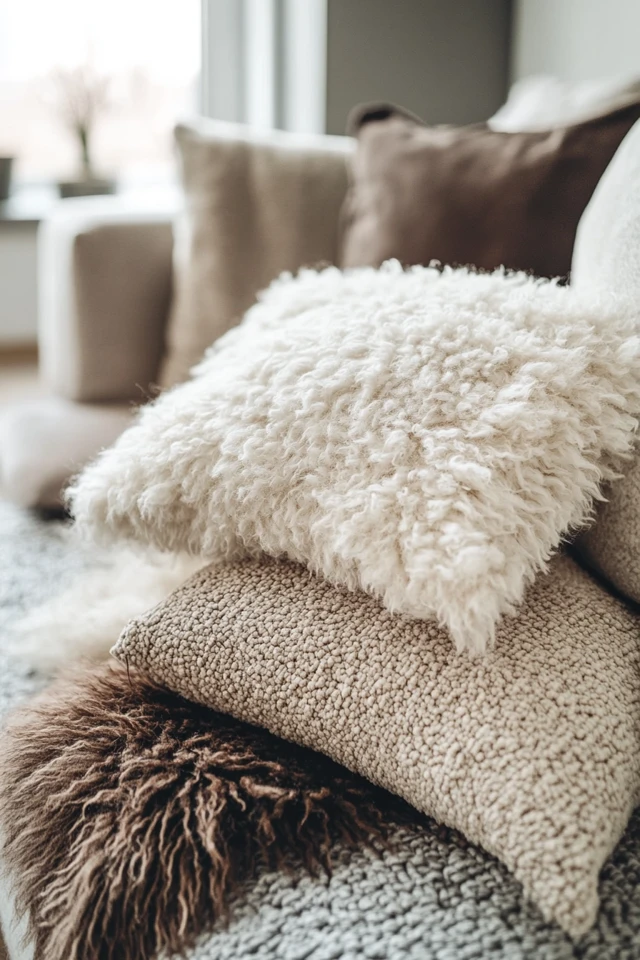
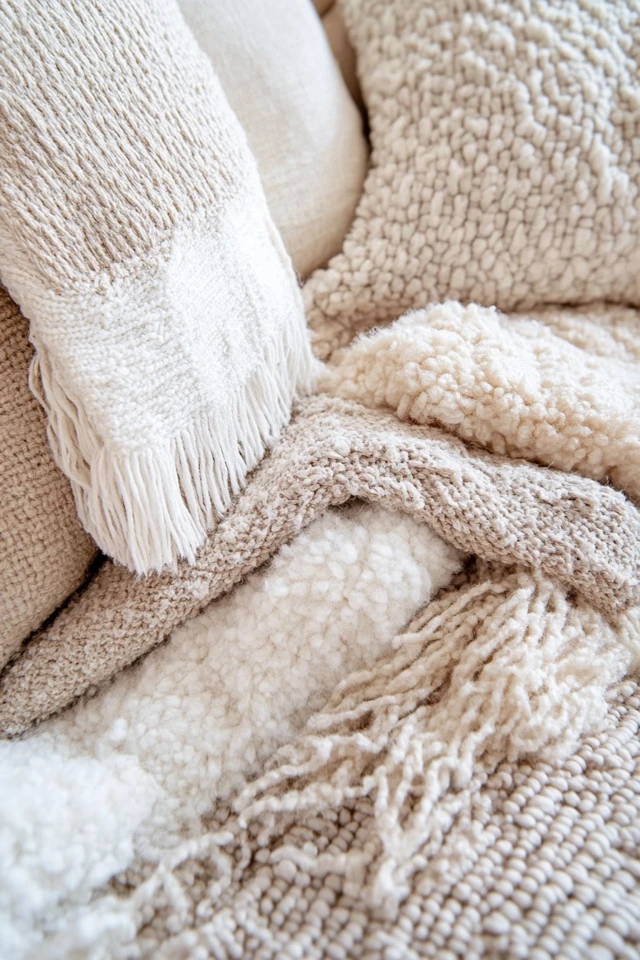
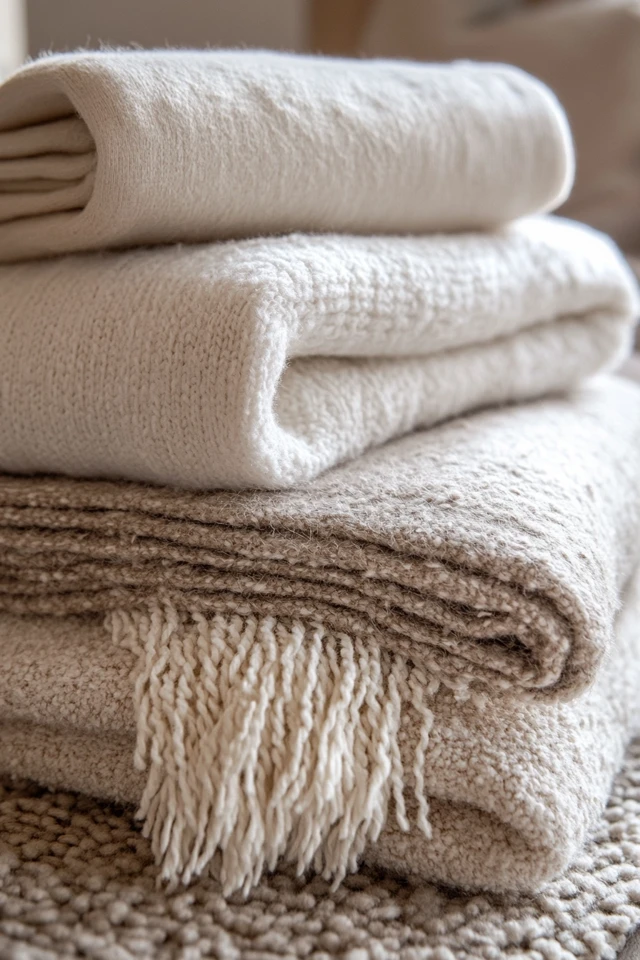
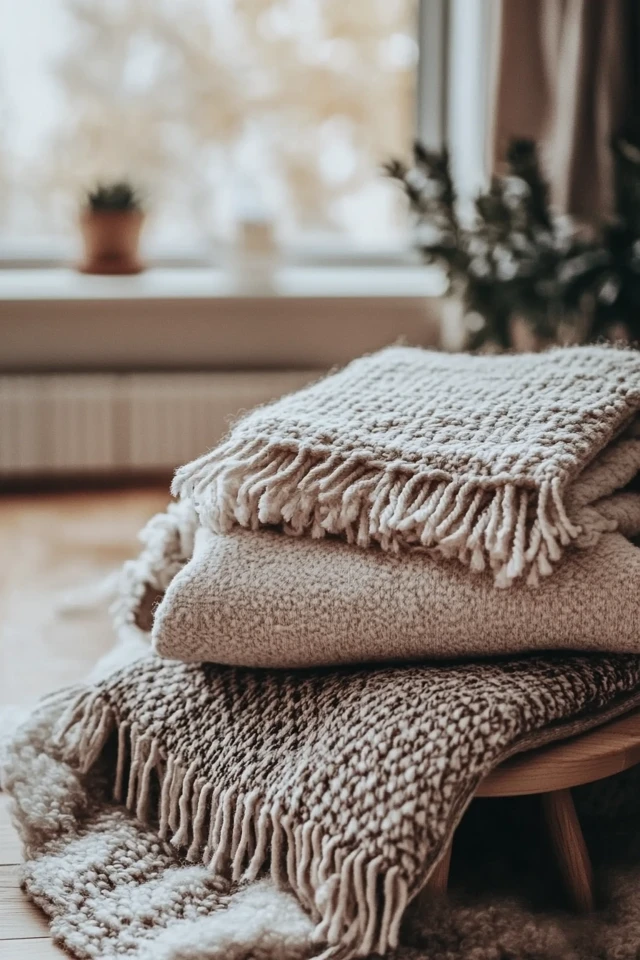

Conclusion
Textures are the key to creating a room that feels cozy, warm, and inviting. From layered bedding to woven accents, every detail adds depth and personality, making your space uniquely yours. What I love most about working with textures is how they engage the senses—you don’t just see the room; you feel it.
So, grab that knit throw, fluff up those velvet pillows, and let your room envelop you in comfort. With the right mix of textures, your space will become a haven of cozy vibes you’ll never want to leave.
FAQ
What are the best textures for a cozy room?
Chunky knits, velvet, faux fur, woven materials like jute or rattan, and soft cottons are ideal for creating a cozy vibe.
Can I mix different textures in one room?
Absolutely! Mixing textures adds depth—just keep them balanced by sticking to a cohesive color palette and focusing on key areas.
How do I add texture without making my room look cluttered?
Focus on layering a few textures in strategic areas, like your bed or seating. Use neutral tones to keep the space calm and uncluttered.
Are textured walls a good idea for a small room?
Yes! Textured walls, like beadboard or wallpaper, can add depth and make a small room feel more dynamic without taking up physical space.
How can I incorporate texture on a budget?
Look for affordable textured items like throw pillows, blankets, or woven baskets at thrift stores, or try DIY projects like painting a textured vase or making a macramé wall hanging.

